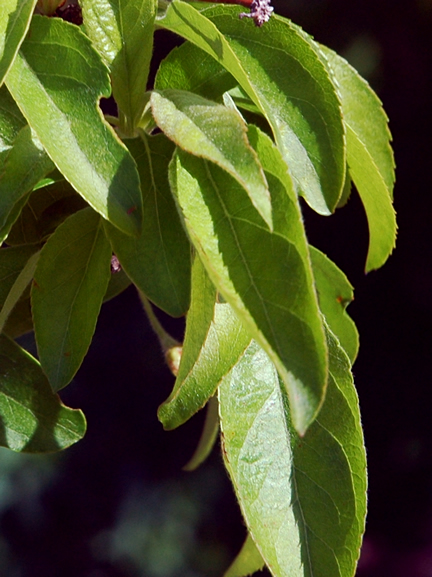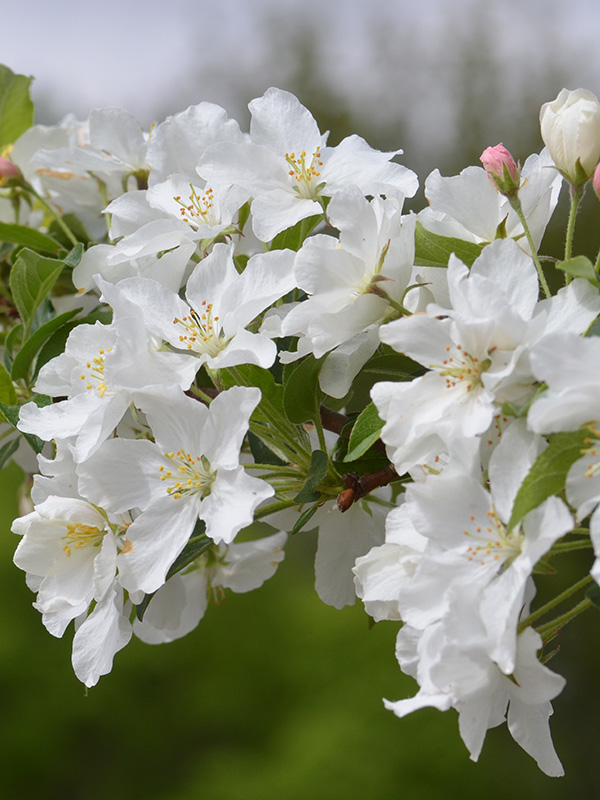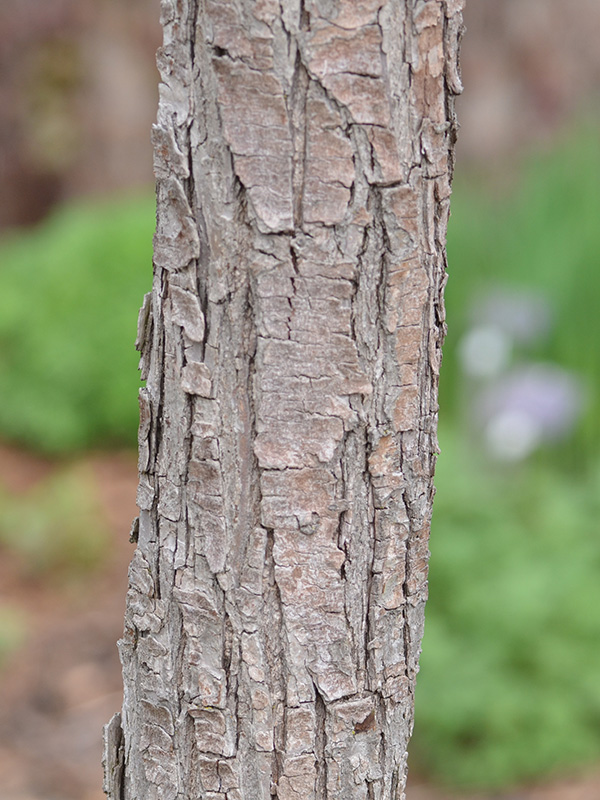| General Description | A flowering crabapple tree with white flowers that is excellent for attracting birds and butterflies. |
| Shape | Broad rounded crown. |
| Landscape | Best planted either as a specimen tree or in small groups. |
| Propagation | May be propagated through grafting. |
| Cultivation | Grows best in full sun in a medium moisture, well-drained, acidic loam, but will adapt to a range of soil types. If pruning is required, it is best done after flowering but prior to June. |
| Pests | Good disease resistance against many common problems, although tent caterpillars, aphids and spider mites may still cause problems. |
| Notable Specimens | Royal Botanical Gardens, Burlington, Ontario, Canada. |
| Habitat | Horticultural origin. |
| Flower/Leaf Bud Description | Buds are pink. |
| Leaf Description | Leaves are dark green, turning yellow in autumn. |
| Flower Description | Flowers are small and white. |
| Fruit Description | Fruit is a bright red crabapple that matures in autumn and persists into winter. Generally produced in abundance and very attractive to birds. |



